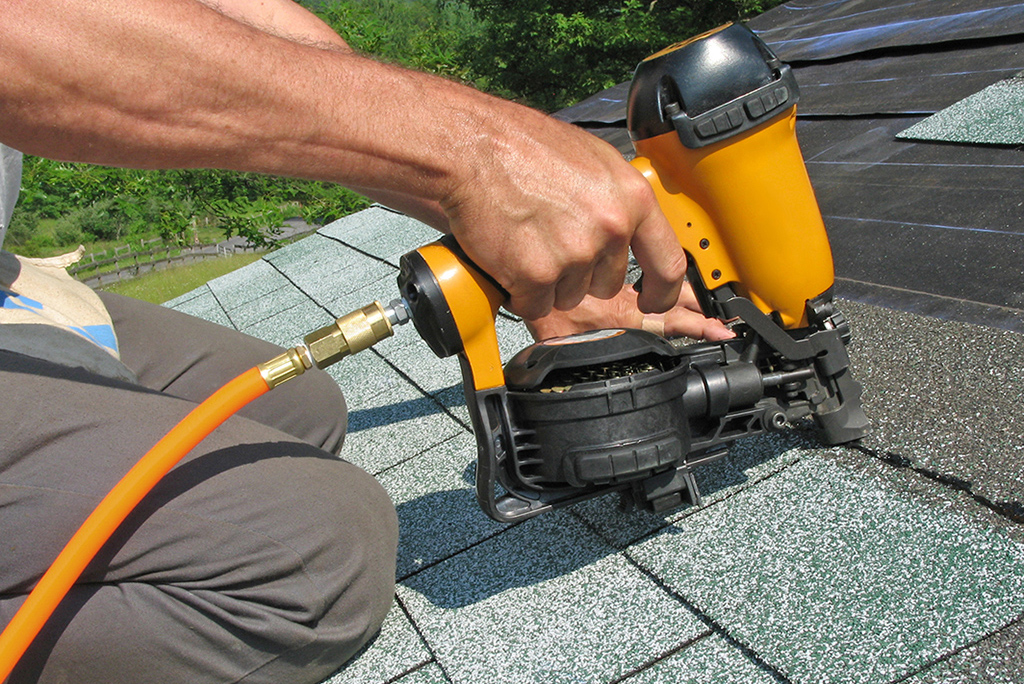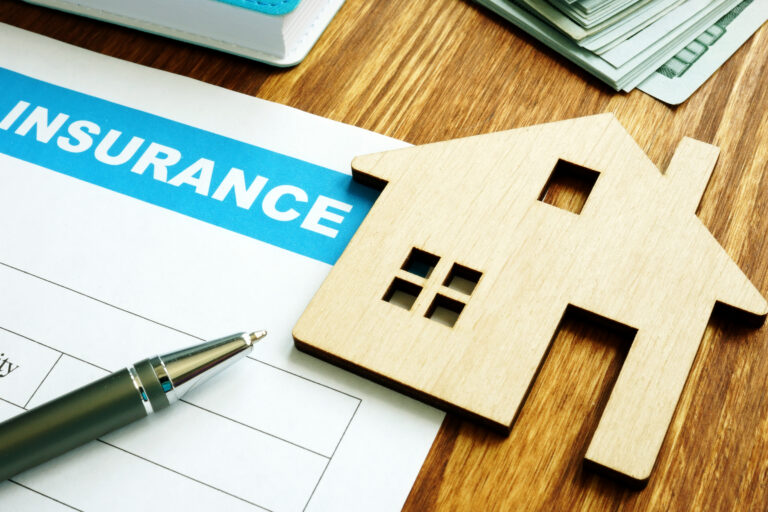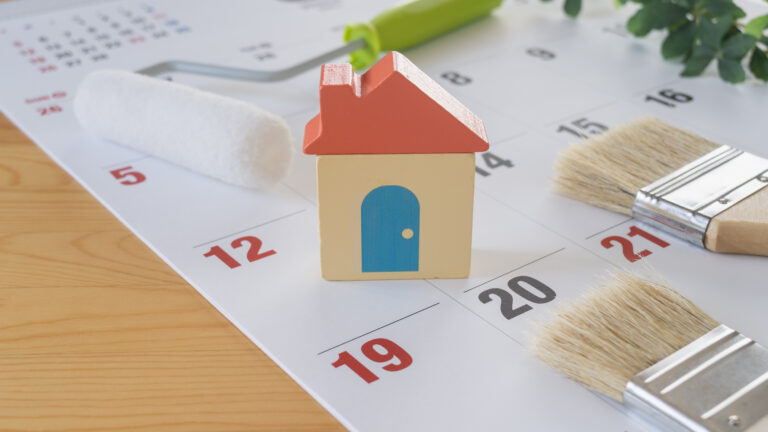Financing Your Roof Replacement or Repair
If you need a new roof or significant roof repairs, you may not be able to pay for the work out of pocket. According to Home Advisor, the average cost of a roof replacement is $7,796 USD, and you could spend more. While the best way to finance a roof is with cash, not everyone has the savings to cover this sizable cost. If this is true in your situation, there are many ways you can secure loans or payment plans to finance your roof, even if you have bad credit. Some roofing companies offer financing plans. You might also consider applying for a government or home equity loan.

We’ll discuss some of the most popular options for securing new roof financing and what you should keep in mind for each option. Ultimately, you should talk to an impartial, professional financial advisor about your specific situation. We hope you might find this guide useful as an introduction to financing methods you may not have thought of and as a way to educate yourself before meeting an advisor.
Get Quotes First
Before you start investigating your financing options, find out if you’ll actually require financing by estimating how much the roof replacement will cost. Get quotes on your new roof or repairs from at least three roofers. If there are significant differences among the quotes, find out why. You can learn about roofing materials and best practices in our Roofing 101 guides.
Once you have a price estimate for your roof, you can assess each financing option to see if it would adequately cover the total cost.
How to Compare Roof Financing Options

When you work through our list of ways to secure financing for roof repair, here’s what to look for. Ideally, pick the option with the lowest interest rate, so you pay the least for your roof in the long run.
Conversely, if you believe you will be able to pay the debt off faster than its term, you may also wish to choose an option that doesn’t have prepayment penalties. Otherwise, if you pay off the debt early, prepayment penalties may cost you what you’re saving in interest by paying the debt off before its term ends.
When comparing your options, remember to also consider not just the interest rates being offered, but other costs associated with the financing.
Finally, you should also consider how long it will take you to secure the money. If you need complete reroofing or major repairs, you may not have time to wait for some financing options. Your roofer can tell you if you’re risking more damage to your home by waiting to secure more favorable financing.
Your roof financing options are:
- Homeowners insurance policy.
- Roofer financing.
- Credit cards.
- Personal line of credit.
- Home equity loans or lines of credit.
- FHA Title 1 loan.
- Other government options.
- Roof financing at home improvement stores.
Let’s discuss these roof replacement financing options in detail so you can decide which works best for you.
1. Homeowners Insurance Policy
Before you secure roof financing, you should determine if your homeowners insurance policy or any limited warranties offer coverage for any damage your roof has suffered. If insurance will cover part of the costs, you will need less financing from other sources.
Your roofer can tell you if a storm contributed to the damage on your roof. There may have been another cause that may be covered by your insurance policy. If you believe you may have coverage, it’s best to start the claim process before you begin any repair work, to be sure the cost of the work will be covered.
Do roofers offer payment plans? Many do. They realize that some of their clients can’t afford their work unless they provide financing. Your roofer’s company may offer its own financing or arrange it through a third party. Either way, assess this loan as you would any other. Compare the interest rate and any associated costs to those of the other available financing options. Roofing companies that offer financing will also accept cash; you needn’t tell them you got the cash from another financing method.
If you do choose to finance your roof through a roofer, look into their roof financing reviews and the reviews left for their partner company. You can find roofers who offer prepayment plans through IKO’s Contractor Locator.
3. Credit Cards
Do roofing companies take credit cards? While many roofers do accept credit cards, you should be cautious about putting a roof replacement on yours. If you anticipate paying off the full amount in a month you don’t have to worry about the interest rate. If not, you may be adding to the cost of your roof significantly with a high interest rate.
For example, if you pay the average amount for your new roof, roughly $7,000, and put it on a credit card with a low interest rate, such as 15%, you may have a minimum monthly payment of roughly $200. If you always paid this estimated minimum payment, you would end up paying roughly an extra $3,000 on top of the cost of your roof. The exact cost depends on the terms of your credit card. Paying more than the minimum payment would help reduce this extra cost.
If you qualify for a credit card, you may be eligible for other bank financing options that offer more attractive terms. Check into them before you put your roof payment on a credit card.
4. Personal Line of Credit
If you need a loan for your roof, one of the best options is to open a personal line of credit, which tends to offer a lower rate of interest. It may also have low monthly payments, which can help you get through times of financial stress, although it’s better to pay more than the minimum when you can.
Your bank may also offer you lines of credit or loans specifically for home improvements. When possible, it is best to secure such loans by offering collateral. Doing so will likely allow you to get a lower interest rate, which means your roof will cost less in the long run. Also, don’t assume you need to stick with your own bank. It’s wise to explore home improvement loans from various financial institutions, including credit unions, other banks and lenders.
5. HELOC or Home Equity Loan
Home equity lines of credit (HELOCs) and home equity loans are two of the best ways to get roof financing if you have bad credit and/or want to minimize your interest rate. Using your home as collateral, you can often negotiate a lower interest rate than you could with other loan types. However, you do need to have some equity built up in your home to take advantage of these options.

Home equity loans are slightly different from HELOCs because they offer a fixed amount of money in a lump sum and have fixed repayment terms.
HELOCs are more flexible, allowing you to withdraw more money over time, and lengthen the time it will take to pay the full amount back. They generally offer less-favorable terms than home equity loans because they offer you greater flexibility.
Your circumstances will dictate whether a HELOC or a home equity loan may be better for you. If you plan on using the credit for multiple home improvement projects, you may prefer a HELOC. Then again, if your priority is just to get a new roof and pay it off quickly, a home equity loan may be the less expensive option. It’s best to review all your options with an impartial financial advisor, meaning one who isn’t affiliated with the bank or loan company you intend to choose.
6. FHA Title 1 Loan
If you’re in the United States, you have another worthwhile method of financing a roof replacement. You may apply for a Federal Housing Administration (FHA) Title 1 loan. Unlike a HELOC, you do not need to have equity in your home to qualify for this loan as long as the loan is under $7,500. FHA Title 1 loans also offer fixed rates without minimum credit scores or income requirements.
In order to qualify for a Title 1 loan, you must meet certain conditions, including:
- You must own the home or have a long-term lease.
- You must have occupied the home for 90 days or more.
- You must use the loan only for the roof replacement or repairs for which you apply.
- You must have a debt-to-income ratio at or under 45%.
The terms and interest rates of Title 1 loans vary based on your provider. The FHA doesn’t provide the loan directly; instead, it insures the private providers who offer the loan. This allows you to shop around when choosing a Title 1 loan.
7. Other Government Options
An FHA Title 1 loan is the most popular government roof financing option, but there are many others. The FHA 203K program is a good loan option if you have little home equity and don’t qualify for an FHA Title 1 loan. The 203K program has a high maximum of $35,000, which can allow you to get top-quality roofing or do other home repairs as well. Once disbursed, the loan amount is added to your mortgage. You pay it off with your mortgage payments.
Your state or province may have other loan or incentive programs that can help you afford your roof. Canadians should look into the Canada Mortgage and Housing Corporation’s current loan and grant offerings. If you need emergency roof repair financing, it is worthwhile to look into the Emergency Repair Program for roofs in critical condition.
Americans can find rebates that may apply to their new roof through the Department of Energy’s tax credit search (through DSIRE) Natural Resources Canada also has a searchable database for rebates. You may find similar databases for your state or province as well.
Even if you can get a grant or tax rebate for only a portion of your roof costs, it’s smart to apply for a rebate no matter how small. Doing so can help you by reducing the amount of financing you need and the amount of overall interest you’ll pay. A small reduction in cost can make paying off your loan more manageable as well.
8. Roof Financing at Home Improvement Stores
Some home improvement stores, including Home Depot and Lowe’s, offer loans to both Canadians and Americans for their home improvement projects. These loans are typically branded credit cards, which only work at the store issuing them. They typically have fixed terms, which means you must pay them off within a certain time frame. They also usually have minimum purchase requirements, which means that they may not be an option for you if you’re only doing roof repairs of less than $2,000.
Be aware that home improvement store credit cards don’t cover the labor costs of your professional roofer. These cards are more often used by homeowners who are doing the roofing project themselves. There are many reasons to avoid doing DIY roof repair or replacement. You should only use these cards if you have a professional roofer who is willing to work with you so that you can buy the materials for your roof using the card.
Also, as with other loan types, you should ensure your roof financing from Home Depot or Lowe’s has the most favorable terms for you. Be sure to compare interest rates, prepayment penalties and other terms with the other roof financing options available to you.
After You’ve Secured Financing for Your New Roof
Now that you’ve decided how to finance your roof replacement or repairs, here are some common do’s and don’ts. Don’t spend your new loan or credit on anything other than the roof replacement because you may risk breaking the terms of your loan or make the loan harder to pay off. Do try to pay off your loan as quickly as you can. It’s wise to pay more than the minimum payment, whenever possible, bearing in mind that any extra money that can be allocated to debt repayment should generally first be used to pay down your highest interest rate debt.
What is the Best Way to Finance a Roof?
Your personal circumstances will determine that. In general, focus on getting quickly available money with the lowest interest rate and associated costs.

Talk to a financial advisor and be sure to compare every available option. Local promotions from a roofer or your bank could help you secure a better deal too.
After your roof replacement or repairs are complete, you’ll benefit from learning how to maintain an asphalt roof. Doing so might delay a future replacement project.


